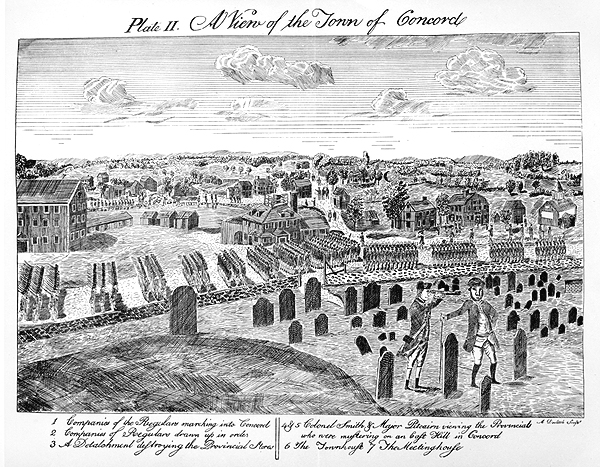

2. Amos Doolittle’s 1775 Engraving of the Center of Concord, Viewed from the Hill Burying Ground
In December of 1775, Connecticut silversmith and engraver Amos Doolittle issued a series of four engraved views of the Battles of Lexington and Concord. Doolittle and artist Ralph Earl, both members of a volunteer Connecticut military company, were stationed in Cambridge after the conflicts on April 19th. The two visited Lexington and Concord in early May, examined the terrain, and talked to colonial eyewitnesses to the fighting. Earl quickly produced four paintings, two of Lexington and two of Concord, for the engraver’s later reference. Back in Connecticut, Doolittle prepared copperplate engravings from Earl’s paintings.
Doolittle’s Plate II was titled “A View of the Town of Concord,” his Plate III “The Engagement at the North Bridge.” Plate II shows Colonel Smith and Major Pitcairn in the Hill Burying Ground, keeping an eye on the colonial forces, with the center of Concord clearly visible beyond them. The meetinghouse and mill pond are seen on the left in the engraving, the Wright Tavern in the center, further to the right the Dr. Timothy Minot House and the gambrel-roofed, county-owned structure that John Richardson later enlarged into the first Middlesex Hotel, and, to the far right, the county courthouse, which doubled as Concord’s town house before the town built its own (1850-1851; see the Town House pages).